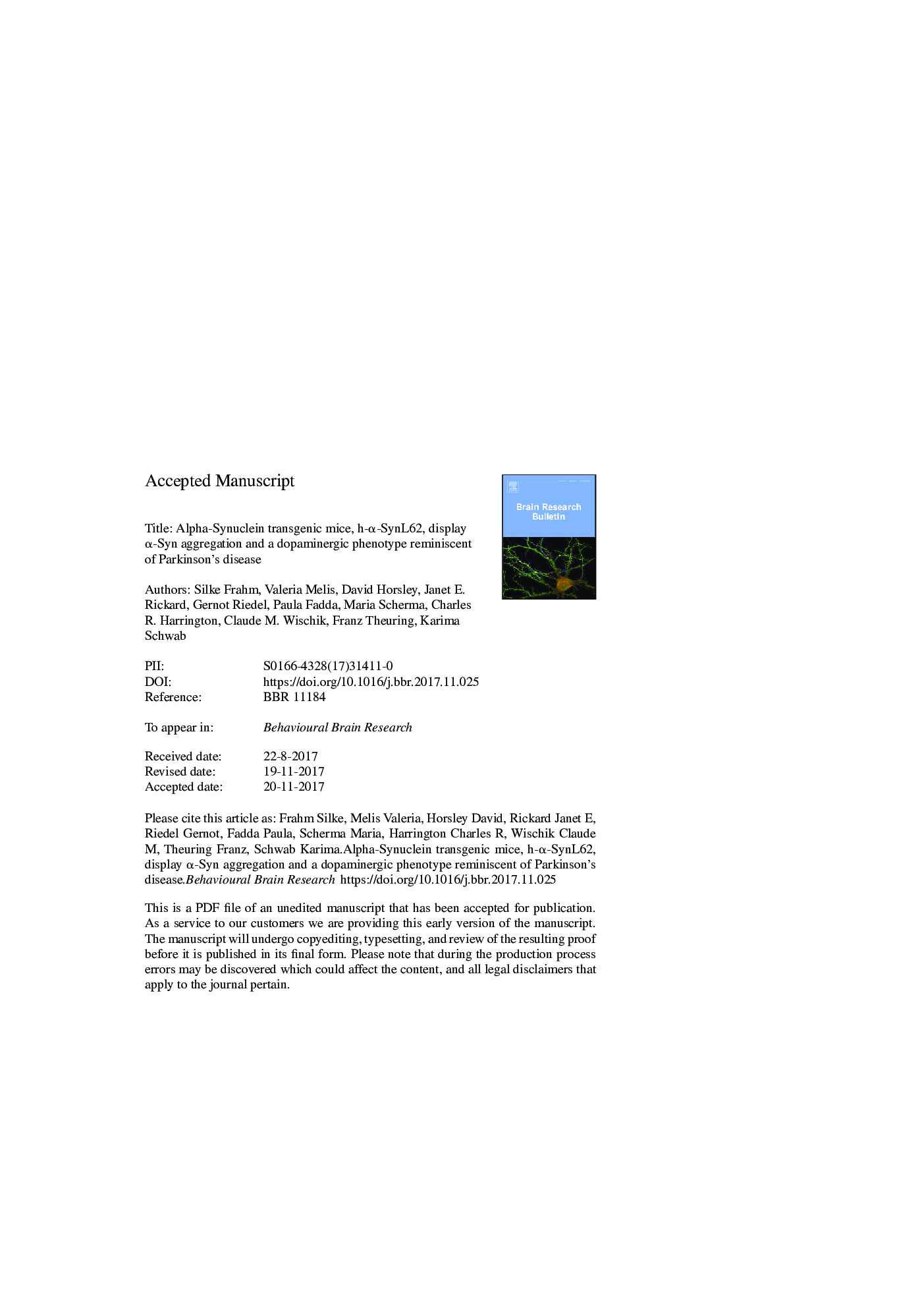| Article ID | Journal | Published Year | Pages | File Type |
|---|---|---|---|---|
| 8837970 | Behavioural Brain Research | 2018 | 42 Pages |
Abstract
Alpha-Synuclein (α-Syn) accumulation is considered a major risk factor for the development of synucleinopathies such as Parkinson's disease (PD) and dementia with Lewy bodies. We have generated mice overexpressing full-length human α-Syn fused to a membrane-targeting signal sequence under the control of the mouse Thy1-promotor. Three separate lines (L56, L58 and L62) with similar gene expression levels, but considerably heightened protein accumulation in L58 and L62, were established. In L62, there was widespread labelling of α-Syn immunoreactivity in brain including spinal cord, basal forebrain, cortex and striatum. Interestingly, there was no detectable α-Syn expression in dopaminergic neurones of the substantia nigra, but strong human α-Syn reactivity in glutamatergic synapses. The human α-Syn accumulated during aging and formed PK-resistant, thioflavin-binding aggregates. Mice displayed early onset bradykinesia and age progressive motor deficits. Functional alterations within the striatum were confirmed: L62 showed normal basal dopamine levels, but impaired dopamine release (upon amphetamine challenge) in the dorsal striatum measured by in vivo brain dialysis at 9 months of age. This impairment was coincident with a reduced response to amphetamine in the activity test. L62 further displayed greater sensitivity to low doses of the dopamine receptor 1 (D1) agonist SKF81297 but reacted normally to the D2 agonist quinpirole in the open field. Since accumulation of α-Syn aggregates in neurones and synapses and alterations in the dopaminergic tone are characteristics of PD, phenotypes reported for L62 present a good opportunity to further our understanding of motor dysfunction in PD and Lewy body dementia.
Keywords
VGLUT1substantia nigra pars reticulateDATα-SynDOPACVMAT2Q-RT-PCR3,4-dihydroxyphenylacetic acidSNpcSNprα-synucleinAlpha-synucleinMotor dysfunctionγ-aminobutyric acidDopamine transporterParkinson’s diseaseprotein aggregationsubstantia nigra pars compactatyrosine hydroxylasevesicular glutamate transporter 1Dopaminevesicular monoamine transporter 2Dopamine receptor type 2dopamine receptor type 1homovanillic acidQuantitative reverse transcriptase polymerase chain reactionHVAGABAglutamateD1 receptorD2 receptor
Related Topics
Life Sciences
Neuroscience
Behavioral Neuroscience
Authors
Silke Frahm, Valeria Melis, David Horsley, Janet E. Rickard, Gernot Riedel, Paula Fadda, Maria Scherma, Charles R. Harrington, Claude M. Wischik, Franz Theuring, Karima Schwab,
